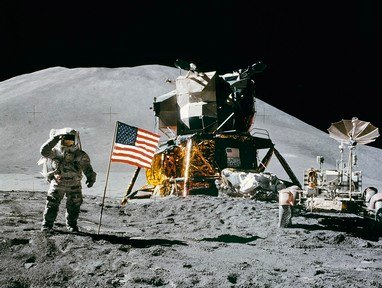Quiz Answer Key and Fun Facts
1. The Lunar Roving Vehicle (LRV) was powered by four small electric motors in each wheel. The motors each produced:
2. How many Apollo missions carried the LRV?
3. Small motors called "ullage rockets" were placed around the rim of the 2nd and 3rd stages of the Saturn V to apply a small force against the direction of motion in order to achieve a clean stage separation.
4. The Apollo Command Module had a heat shield to protect it from burning up during re-entry. The approximate thickness of this shield was:
5. The heatshield of the Command Module protected it during re-entry by a process known as:
6. How many periods of Extra Vehicular Activity (EVA) were conducted during the Apollo 16 mission?
7. If G is the weight of a stationary object on the earth's surface, during what phase of the Apollo mission were the maximum number of G's imposed on the astronauts body?
8. There were 33 positions on the 11 manned Apollo flights. How many astronauts went to the moon more than once?
9. Which company was awarded the contract to build the S1C first stage of the Saturn V rocket?
10. When Apollo 11 landed on the moon the team on duty at mission control was led by:
Source: Author
mstanaway
This quiz was reviewed by FunTrivia editor
bloomsby before going online.
Any errors found in FunTrivia content are routinely corrected through our feedback system.
